The Department of Social Welfare and Development (DSWD) Sustainable Livelihood Program (SLP) is a community-based capacity-building initiative designed to improve the socio-economic well-being of marginalized and vulnerable Filipino households. The program aims to provide beneficiaries with income-generating opportunities and skills enhancement, leading to sustainable self-sufficiency and improved quality of life.
Also read: How to Apply DSWD Medical Cash Assistance in Cebu
The primary objective of the SLP is to empower individuals, families, and communities by equipping them with the necessary tools, knowledge, and resources to become active participants in their own development.
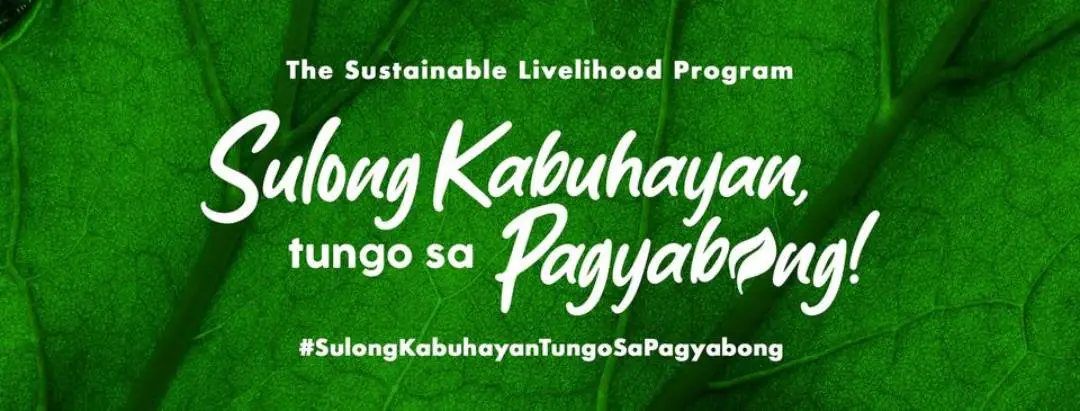
The target beneficiaries of the Sustainable Livelihood Program include families who are part of the Pantawid Pamilyang Pilipino Program (4Ps), persons with disabilities, indigenous peoples, internally displaced persons, and other vulnerable sectors identified by the DSWD. The program adopts a participatory approach, involving beneficiaries in the planning, implementation, and monitoring of livelihood projects.
What is DSWD Sustainable Livelihood Program?
The Department of Social Welfare and Development (DSWD) Sustainable Livelihood Program (SLP) is an initiative aimed at reducing poverty and generating employment. The program offers financial support and opportunities for skill development to households with low income, enabling them to enhance their economic well-being. By providing these resources, the SLP empowers individuals and families to achieve greater financial stability and self-sufficiency.
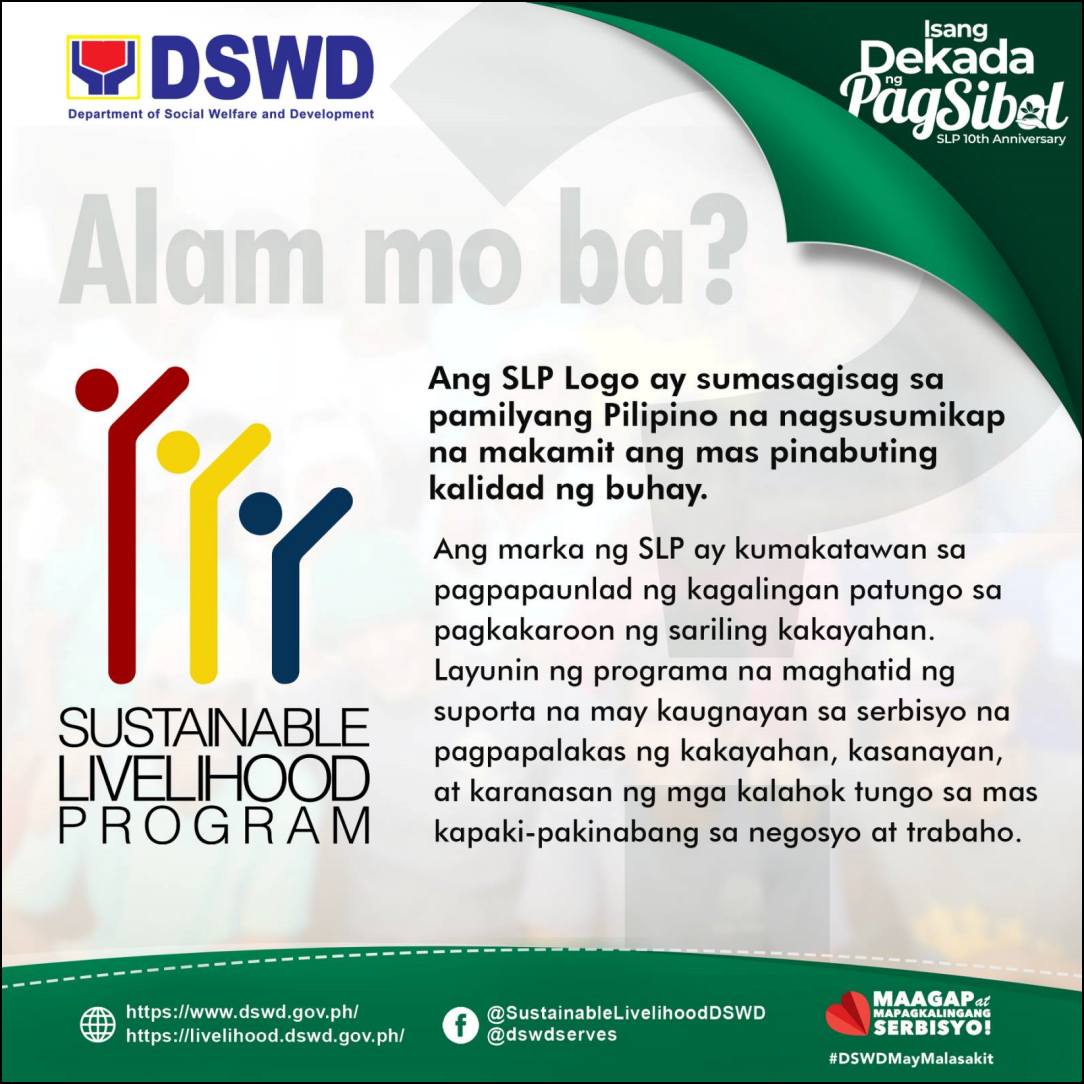
Types of Assistance and Cash Aid
The DSWD Sustainable Livelihood Program (SLP) offers various forms of assistance and cash aid to its beneficiaries, focusing on capacity-building and sustainable income-generating opportunities.
The main types of assistance provided under the SLP include:
1. Microenterprise Development
This component of the program supports the establishment or expansion of small businesses by nurturing entrepreneurial skills and providing financial assistance. Beneficiaries receive training in business management, technical skills, marketing strategies, and financial literacy. They may also have access to credit facilities and other financial services to help them start or grow their microenterprises.

2. Employment Facilitation
This strategy aims to enhance the employability of beneficiaries by providing them with relevant skills training, job placement assistance, and career guidance. Employment Facilitation focuses on both wage employment and self-employment opportunities, depending on the needs and preferences of the participants. By equipping beneficiaries with the necessary skills and connecting them with potential employers, this component helps them secure stable income sources and improve their socio-economic status.
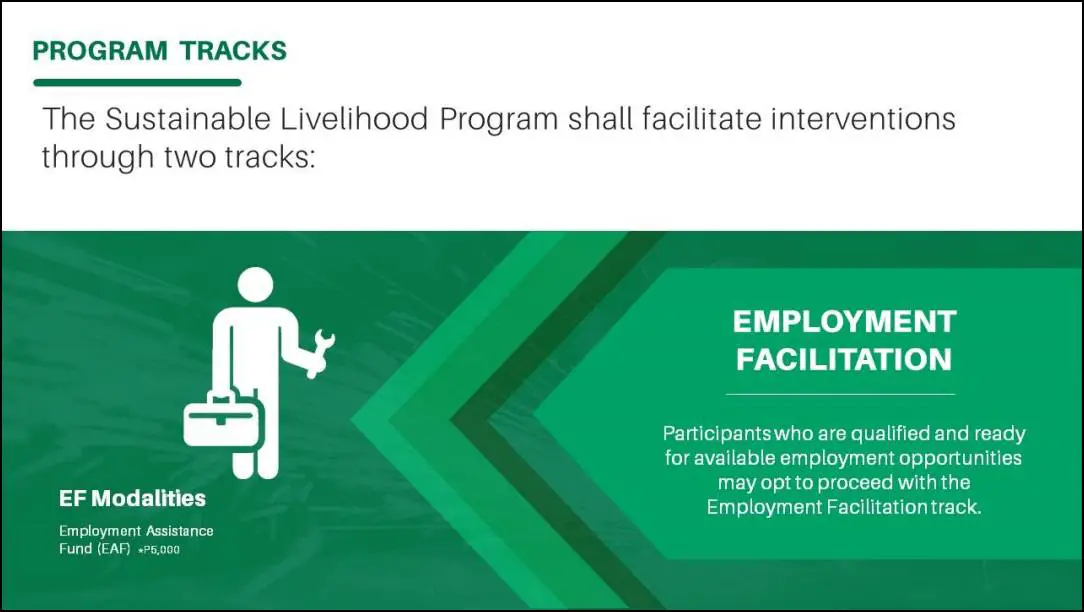
Also read: DSWD Program Pantawid Pamilyang Pilipino Program (4Ps): Helping Filipino Families in Need
Benefits of Sustainable Livelihood Program
The Sustainable Livelihood Program (SLP) offers numerous benefits to its beneficiaries and the wider community, as it aims to alleviate poverty by empowering marginalized individuals, families, and communities. The key benefits of the program include:
- Income Generation: By providing access to financial resources, skills training, and market linkages, the SLP enables beneficiaries to establish or expand their microenterprises or secure wage employment. This results in increased income levels and improved socio-economic status for the participating households.
- Skills Development: Through various training programs, workshops, and mentoring sessions, the SLP equips beneficiaries with essential skills related to entrepreneurship, employability, and personal development. This enhances their capacity to engage in productive economic activities and adapt to changing market conditions.
- Community Empowerment: The SLP adopts a participatory approach, involving beneficiaries in the planning, implementation, and monitoring of livelihood projects. This fosters a sense of ownership and responsibility among participants, strengthening social cohesion and promoting collective action towards poverty reduction and community development.
- Enhanced Resilience: By providing access to social protection programs and incorporating disaster risk reduction and climate change adaptation measures, the SLP helps beneficiaries build resilience against shocks and stresses, such as natural disasters, economic crises, or health emergencies.
- Improved Health and Education: With the provision of grants for health and education, the SLP contributes to better access to healthcare services and quality education for beneficiary families. This leads to improved health outcomes and increased educational attainment, breaking the cycle of poverty and vulnerability.
- Gender Equality and Social Inclusion: The SLP promotes equal opportunities for all beneficiaries, regardless of their gender, age, or social status. By targeting vulnerable groups, such as women, persons with disabilities, indigenous peoples, and internally displaced persons, the program ensures that the needs and aspirations of these marginalized populations are addressed.
- Sustainable Development: By focusing on sustainable income-generating opportunities and capacity-building interventions, the SLP contributes to long-term socio-economic development and poverty reduction in the communities it serves. This aligns with the United Nations Sustainable Development Goals (SDGs), particularly Goal 1: No Poverty and Goal 8: Decent Work and Economic Growth.
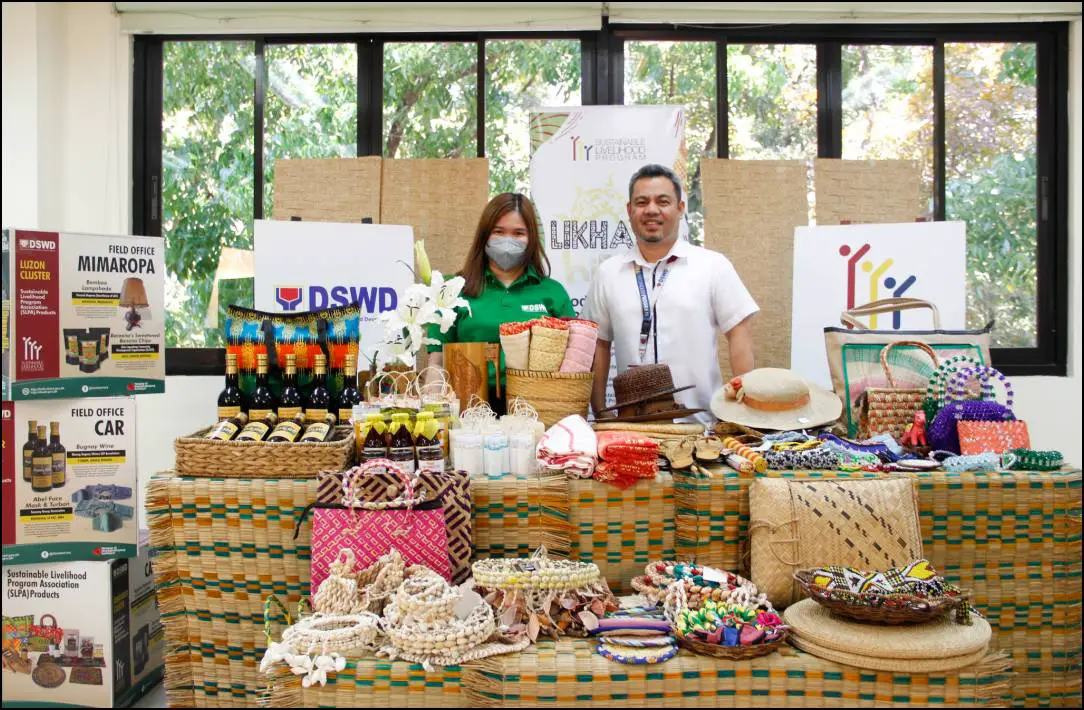
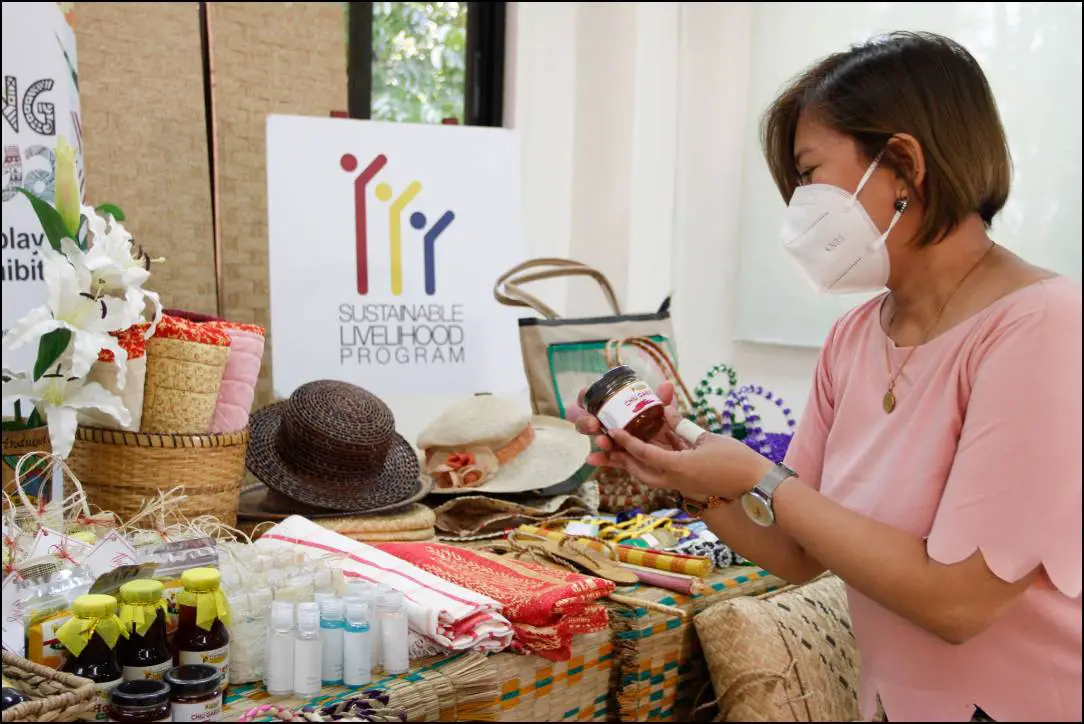
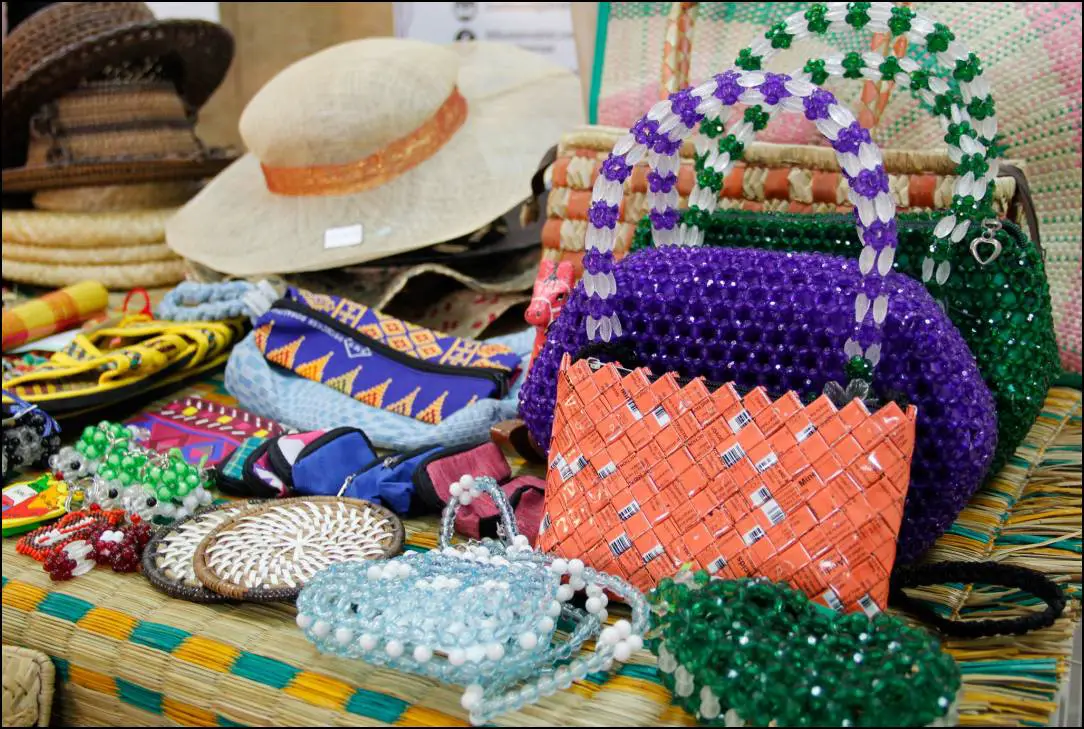
Overall, the Sustainable Livelihood Program plays a crucial role in empowering marginalized individuals, families, and communities to overcome poverty and achieve self-sufficiency. By providing targeted support and resources, the program creates lasting positive impacts on the lives of its beneficiaries and contributes to inclusive and sustainable development in the Philippines.
Also read: Step-by-Step Guide to Applying for PCSO Medical Assistance in Cebu
Eligibility Criteria and Qualifications
The eligibility criteria for the DSWD Sustainable Livelihood Program (SLP) are designed to ensure that assistance is provided to those who need it most. The program primarily targets marginalized and vulnerable households in the Philippines.
The following are the general eligibility criteria for individuals, families, and communities seeking to participate in the SLP:
1. Maximum enrollment limit
Each household can enroll up to two individuals pursuing two distinct tracks: Microenterprise Development (resource-based and market-driven sustainable microenterprises) and Employment Facilitation (technical and vocational training).
2. Job network services
Program participants are connected to local jobs that match their skills and competencies.
3. Submission of employment requirements
Participants must submit all necessary employment-related documents when applying for the program.
4. Microenterprise Development track requirements
Participants in the Microenterprise Development track must be at least 16 years old, have documented parental or guardian consent, and be a member of an organization promoting sustainable livelihoods.
5. Employment Facilitation track age requirement
Participants in the Employment Facilitation track must be at least 18 years old at the time of hiring, in accordance with legal employment requirements.
6. Low-income households not part of NHTS-PR
Eligible low-income households that are not part of the National Household Targeting System for Poverty Reduction (NHTS-PR) may also participate in the program.
7. Access to formal credit facilities
For the Microenterprise Development Track, participants must have limited access to formal credit facilities and be enrolled in DSWD’s social protection programs.
8. Pantawid Pamilya Pilipino Program eligibility
Participants should have at least two years of eligibility in the Pantawid Pamilya Pilipino Program, and their Social Welfare Indicators should demonstrate that they are ready to engage in livelihood activities.

Please note that the specific eligibility criteria may vary depending on the local context and the objectives of the particular SLP intervention. Local government units, DSWD regional offices, and community-based organizations may have additional requirements or guidelines to determine eligibility for the program.
Also read: How to Apply DSWD Cash Aid Assistance for Senior Citizens
Requirements
1For Microenterprise Development (MD) Track
- SLP Orientation: Participants must attend an SLP orientation to learn about the program and its offerings.
- Micro-enterprise Development Training: Participants are required to complete a Micro-enterprise Development Training and sign a Modality Application Form with all necessary attachments.
- Modality Application Form: A completed and signed Modality Application Form, along with all required attachments, must be submitted.
- Approved Mungkahing Proyekto: Participants need to have a signed Mungkahing Proyekto (Project Proposal) approved by the Regional Director.
For Employment Facilitation (EF) Track
- Basic Employment Skills Training or Legal Documentation: Participants must either participate in basic employment skills training or provide legal documentation demonstrating their qualifications.
- Employment Assistance Fund or Skills Training Fund Needs Assessment: Participants need to complete and sign an Employment Assistance Fund (EAF) or Skills Training Fund needs assessment.
- Modality Form: Submission of a completed Modality Form is required.
- EAF Fund Commitment and Attachments: Participants must submit an EAF Fund commitment document along with any necessary attachments.
- Approved Mungkahing Proyekto: A Mungkahing Proyekto (Project Proposal) that has been approved and signed by the Regional Director is required.
By fulfilling these requirements, participants can ensure their eligibility and access the resources and support offered by the Sustainable Livelihood Program under the respective tracks.
How to Process Application for the Sustainable Livelihood Program
Step 1: Visit your local Social Welfare and Development Office
Start by visiting your city or municipal Social Welfare and Development Office to inquire about the Sustainable Livelihood Program and obtain information on the application process.
Step 2: Contact the SLP Officer
After gathering all the necessary documents, get in touch with the Sustainable Livelihood Program (SLP) officer responsible for processing applications. They can guide you through the next steps and answer any questions you may have.
Step 3: Participate in SLP activities
As a participant in the program, you are required to attend all SLP activities held in your area. These may include orientations, training sessions, workshops, and meetings.
Step 4: Follow up with the officers in charge
After attending all required SLP activities, make sure to follow up with the officers in charge so they are aware of your participation. This will help them start processing your application for financial assistance.
Step 5: Wait for fund release
Once your application has been approved, wait for the Department of Social Welfare and Development (DSWD) to release the funds into your designated account. The timeline for fund disbursement may vary, so it’s essential to maintain communication with the SLP officer for updates on your application status.
By following these steps, you can successfully apply for the Sustainable Livelihood Program and access the resources and support available to help improve your socio-economic status.
Also read: How to Apply DSWD Cash Aid Death and Burial Assistance
Success Stories and Testimonials
Success stories and testimonials from beneficiaries of the Sustainable Livelihood Program (SLP) can inspire and encourage potential participants to take advantage of the opportunities offered by the program.
Here are a few examples:
1. Flordelzia N Omnes, a Registered Social Worker and Municipal Social Welfare and Development Officer in Midsayap, North Cotabato, shared the positive impact of the Sustainable Livelihood Program (SLP) on their community. Various micro-enterprises have been piloted in their municipality, serving different sectors of society and significantly improving the lives of SLP participants.
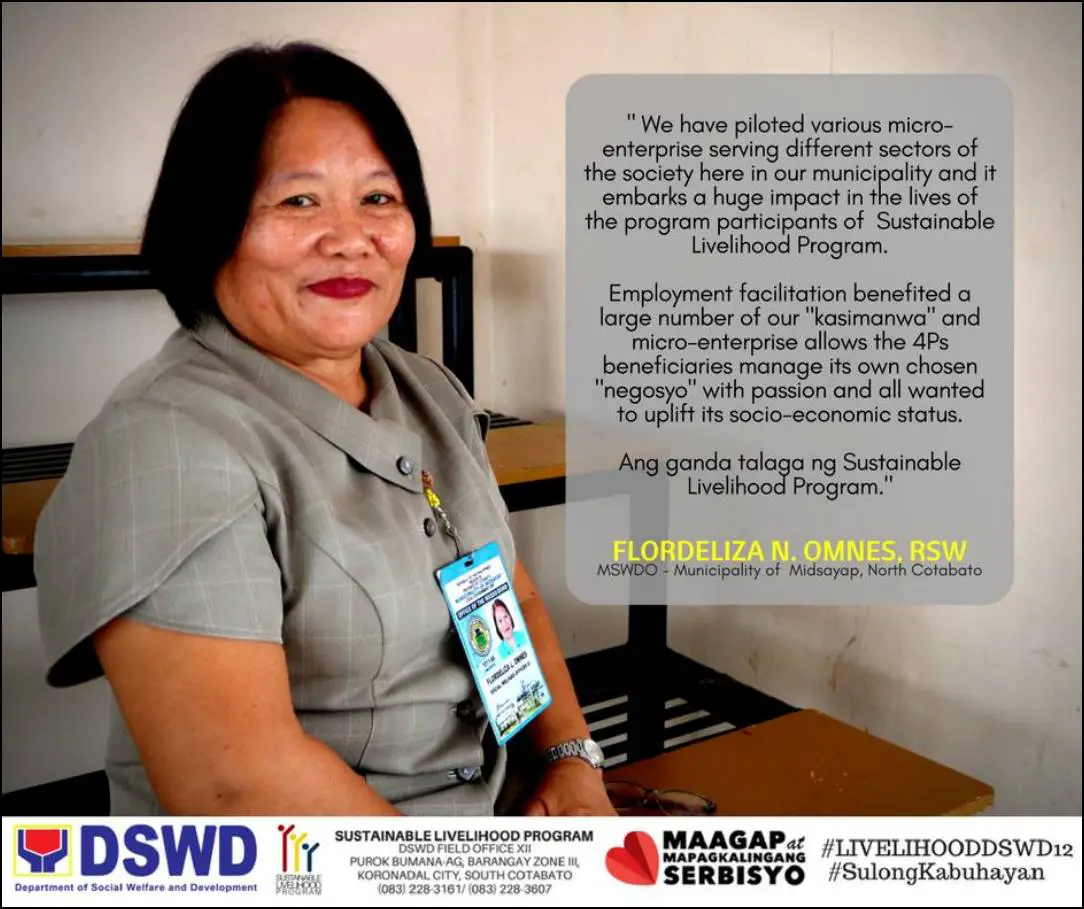
2. Hon. Romeo D Arana, the Municipal Mayor of Midsayap in the Province of North Cotabato, appreciates the Sustainable Livelihood Program (SLP) by DSWD for its ability to empower participants by developing their skills. The program provides free training at institutions, enabling participants to enhance their abilities further. The people of Midsayap are dedicated to supporting the SLP implementation, working hand in hand and step by step to improve the lives of their fellow community members.
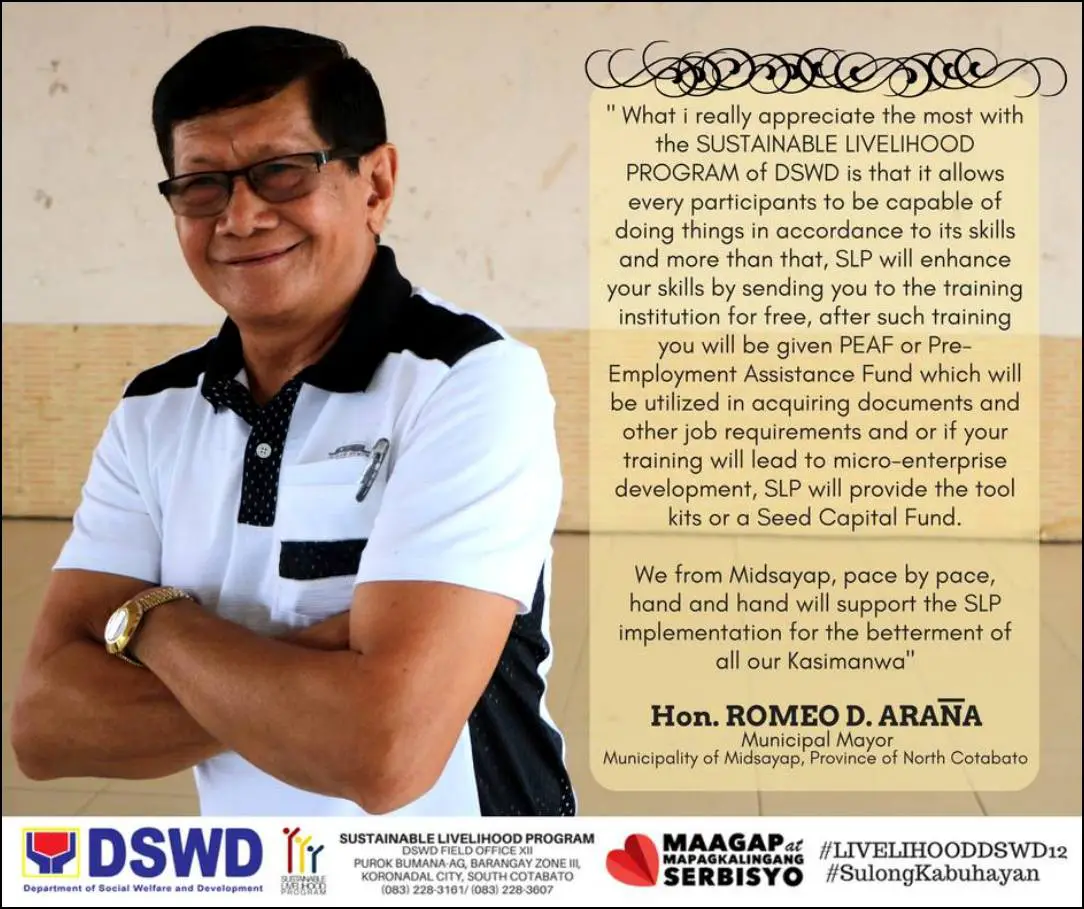
3. “Certainly, I would be in our area fishing or perhaps doing a side job as a conductor if I hadn’t joined the Call Center skills training under the Sustainable Livelihood Program of the DSWD.”
Kervin Dominise from Dalaguete, Cebu, is certain that if it weren’t for the Call Center skills training provided by the Sustainable Livelihood Program (SLP) of DSWD, he would still be fishing in their local area or working as a conductor as a side job. The training offered by the SLP has opened new opportunities for Kervin and allowed him to explore a different career path with better prospects.

4. “I learned a lot from our training, not just how to make bread, but also how to improve my character. Through the process of making bread, I developed patience. My behavior has changed because my patience has grown, especially when it comes to making bread. This personal growth is a result of the training provided by the DSWD SLP.”
Odinah H. Doblas, an SLP participant from San Miguel, Bacong, Negros Oriental, shares that she learned a lot from the training, not just about making bread but also about personal growth. Through the process of bread-making, she developed her patience and experienced a significant improvement in her overall demeanor. This personal development is a result of the training provided by the DSWD Sustainable Livelihood Program.

5. “We are very grateful for this project from the SLP because it provides us with a great source of livelihood. Without their support, we wouldn’t have been able to establish this business on our own using our personal resources.”
Marivic A Mipana, a program participant from Cagdianao in the Province of Dinagat Island, expresses her gratitude for the Sustainable Livelihood Program (SLP) project, as it has provided significant income opportunities for their community. She acknowledges that without the support of SLP, they would not have been able to establish this business venture using their own financial resources.
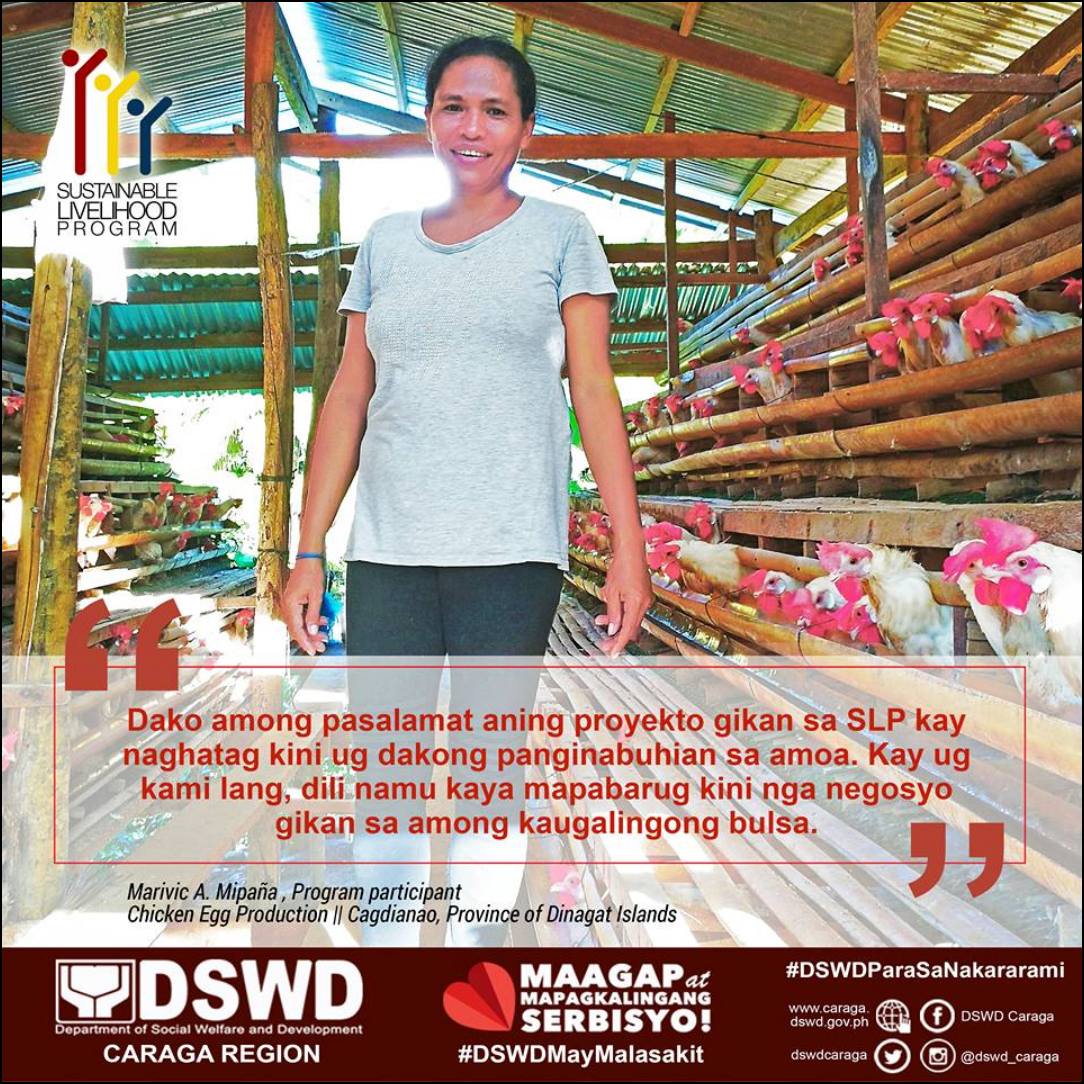
6. “If I hadn’t been fishing before, we wouldn’t have had anything to eat, but now that I have a permanent job through the DSWD Sustainable Livelihood Program (SLP), I can not only provide food for my family but also meet their other needs that were difficult for me to provide in the past.”
Jose Alex Baal, a Security Services NCI and SLP participant from San Francisco, Camotes Island, shares that before, when he was only fishing, his family could barely have enough to eat. However, now that he has a permanent job through the DSWD Sustainable Livelihood Program, he can not only provide food for his family but also meet their other needs that were difficult to fulfill in the past.

7. “Collaboration and mutual understanding are the secrets to a successful association and business.”
Wilmert Dumapit Detablan, the President of Barra Fisherfolks Livelihood Association in Barangay Barra, Roxas City, Capiz, believes that the secret to a successful association and business lies in cooperation and understanding among its members.
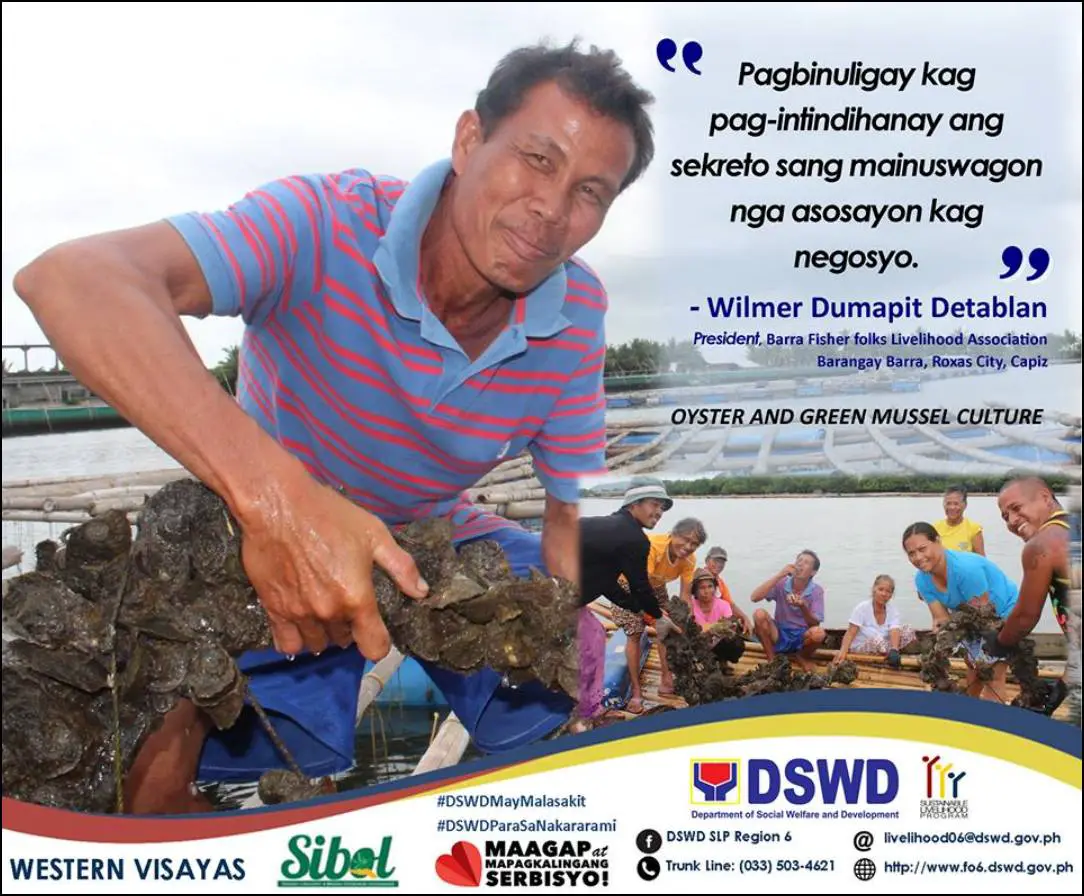
8. “Let us keep in mind, embrace, and implement the clean assistance and lessons provided by the SLP and 4Ps to achieve the progress we desire, which the DSWD wants to happen for the less fortunate.”
Jesusa Saldivar, Marties Bolon, Perle Villamor, and Angelina Ramos from SKA-P Eatery and Catering Services in Poblacion 2, Mobo Masbate, emphasize the importance of keeping in mind, embracing, and executing the assistance and programs provided by SLP and 4Ps with integrity. This approach will help achieve the desired progress and development that DSWD aims to bring to the underprivileged communities.
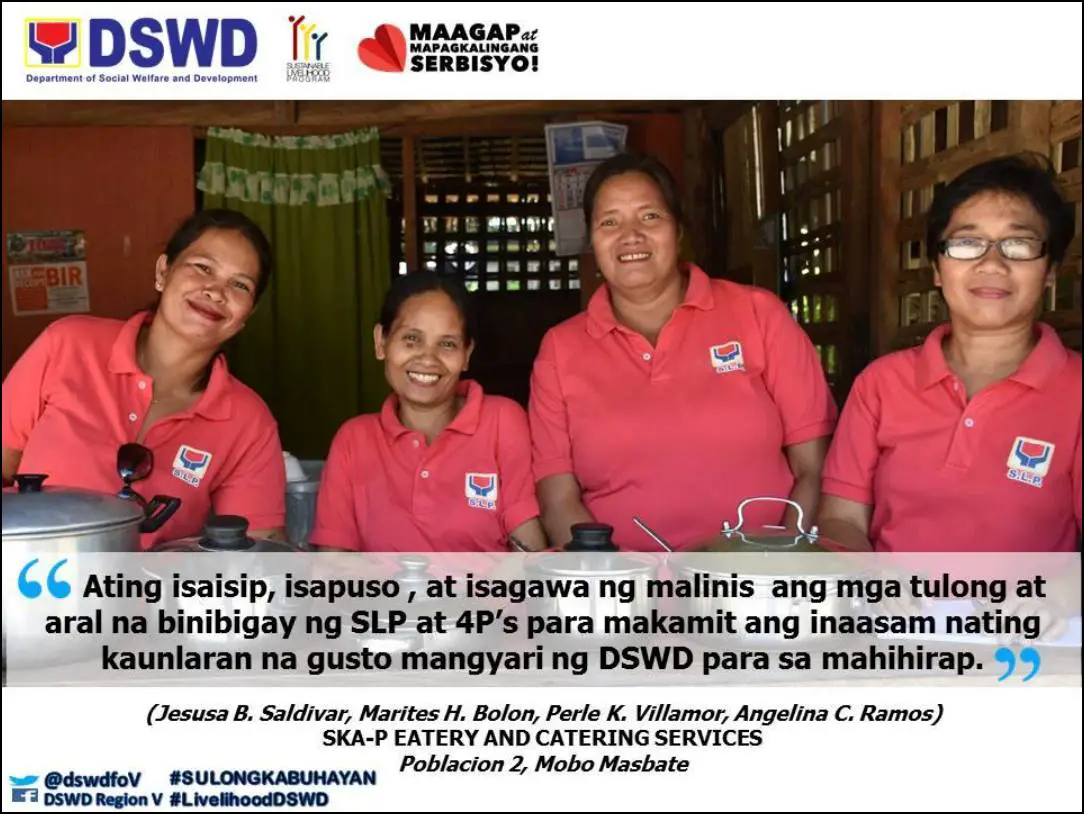
9. High-quality, fashionable bags are among the offerings from Guihulngan Weavers of Pandan Association (GWAPA), a Sustainable Livelihood Program (SLP) initiative in Guihulngan, Negros Oriental. The weavers in this association constantly strive for improvement by creating a variety of trendy, sophisticated, and affordable pandan bag designs.
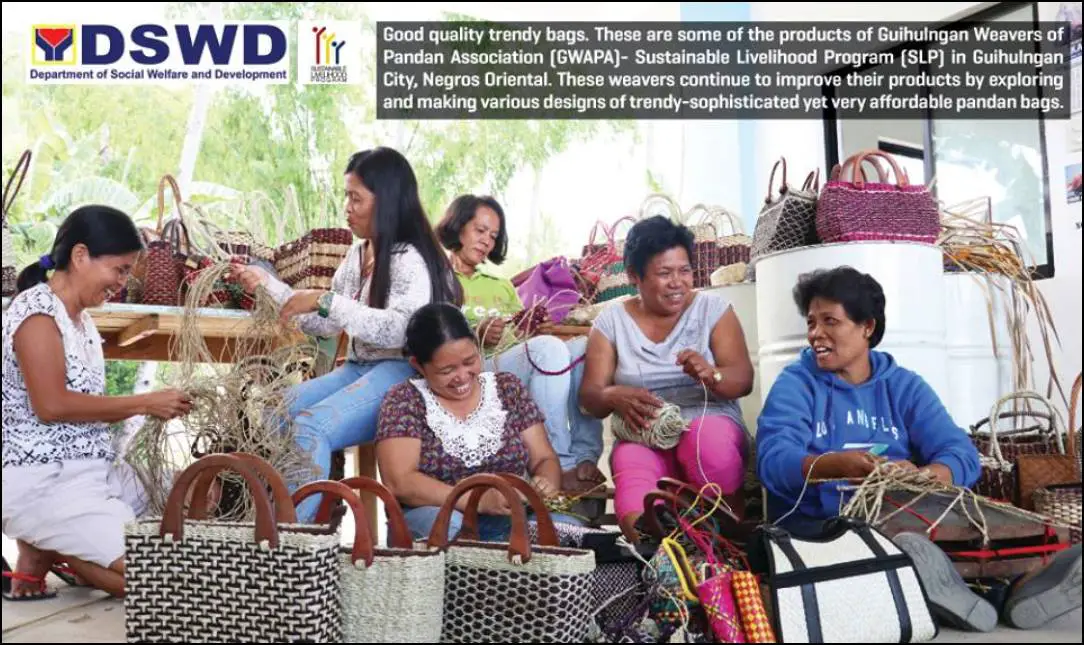
10. “Age is not a barrier for someone who is determined and wants to help their family. The DSWD Sustainable Livelihood Program (SLP) paved the way for me to find a regular job.”
Flordeliza Basco, a 45-year-old SLP participant from San Vicente, Ilocus Sur, and Utility Staff member at Northside Doctors Hospital, shares her experience, emphasizing that determination and a desire to support one’s family can overcome age-related challenges.
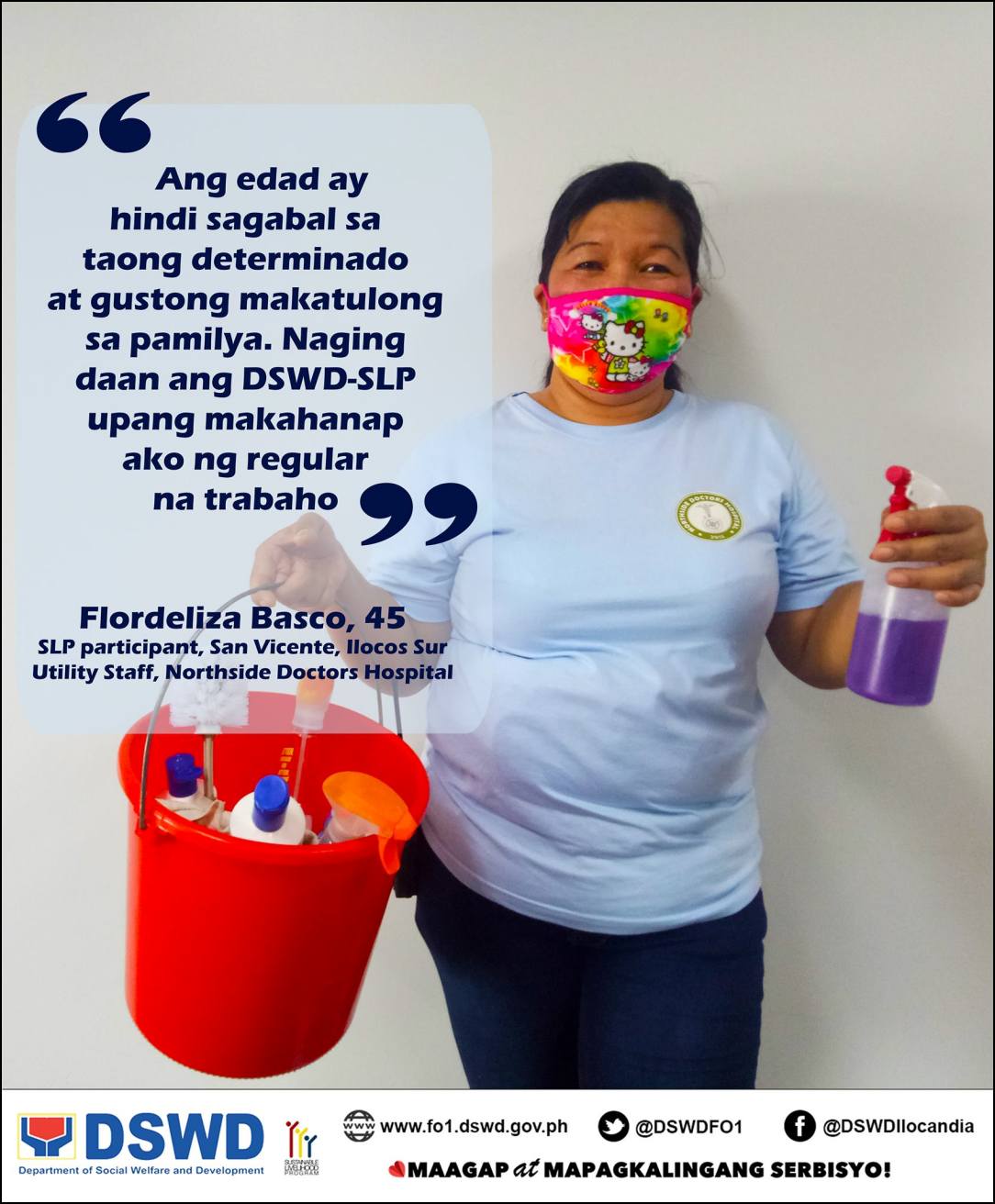
11. “In the past, when I didn’t have my own boat, I had to share not only the income but also the fish I caught with the boat owner. Now that I have my own boat, I no longer worry about providing for my family, as I get to keep all the earnings and fish I catch.”
Inocencio Dawang, an SLP beneficiary from Brgy. Camalig, Sarangani, Davao Occidental, shares his experience of how owning a boat has significantly improved his family’s livelihood.

12. ” Many thanks to the DSWD’s Sustainable Livelihood Program (SLP), as it has provided us with a source of income and support for our daily lives.”
Cherry Lorenzao, a 36-year-old member of the Bio-Intensive Gardening SLPA in Brgy. Igang, Masbate City, expresses her gratitude for the opportunities and assistance provided by the SLP.
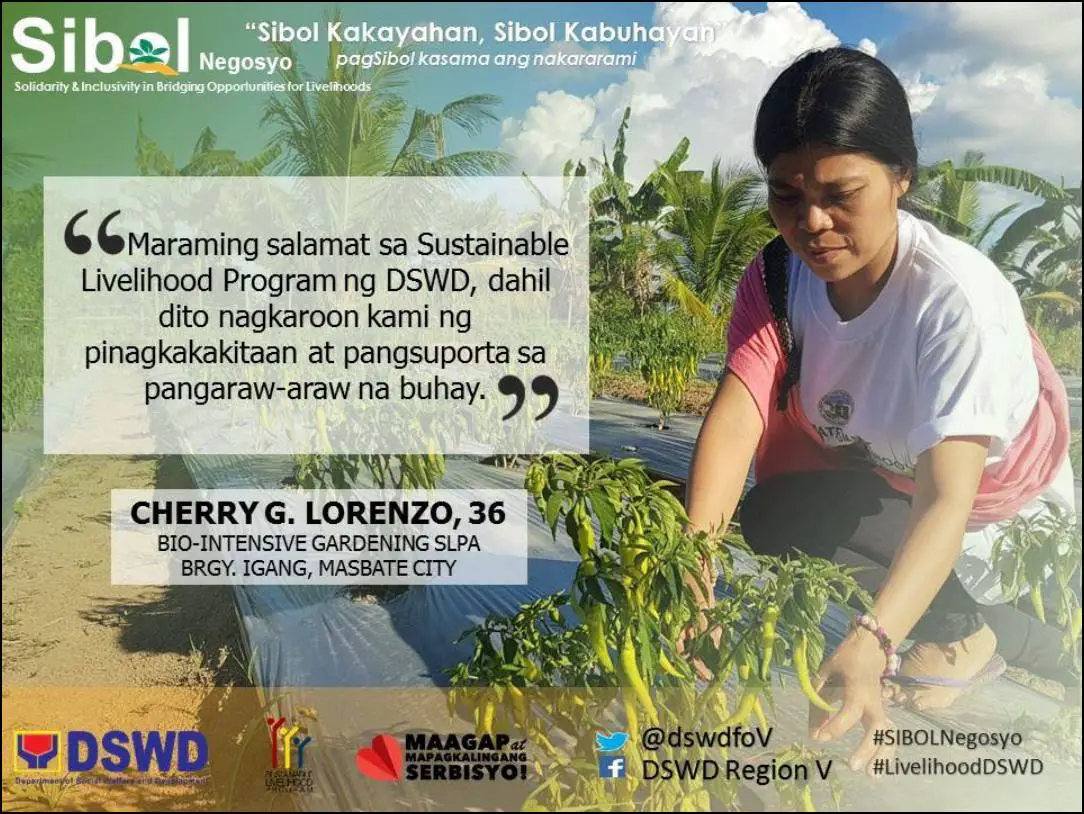
The Sustainable Livelihood Program can positively impact individuals, families, and communities, as illustrated by success stories and testimonials. Through financial aid and capacity-building opportunities, the program enables people to enhance their economic status and combat poverty.
Tips and Recommendations for Potential Beneficiaries
Here are some tips and recommendations for potential beneficiaries of the Sustainable Livelihood Program (SLP):
- Research and gather information: Before applying for the program, do thorough research to understand the eligibility criteria, requirements, and benefits. Visit your local Social Welfare and Development Office or consult their website for detailed information.
- Prepare necessary documents: Collect and organize all required documents beforehand to ensure a smooth application process. This may include identification documents, proof of income, and other relevant paperwork.
- Attend community meetings and workshops: Participate in local community meetings and workshops related to the SLP. These events can help you stay informed about the program, network with other potential beneficiaries, and gain valuable knowledge and insights.
- Be proactive and engaged: Show your commitment and enthusiasm by actively participating in SLP activities and seeking assistance from program officers when needed. Demonstrating your dedication can help increase your chances of receiving financial support and other resources.
- Collaborate with other beneficiaries: Form connections with other program participants to exchange ideas, share experiences, and learn from each other. Working together can help you develop better strategies for your livelihood projects and improve your chances of success.
- Develop a realistic and sustainable project plan: When designing your livelihood project, ensure that it is feasible, sustainable, and aligned with your skills and interests. Consider the local market demand, potential challenges, and available resources while planning your project.
- Seek continuous learning and improvement: Take advantage of the training programs, workshops, and mentoring sessions offered by the SLP. Continuously improve your skills and knowledge to enhance your employability or grow your microenterprise.
- Monitor your progress and adjust as needed: Regularly evaluate your livelihood project’s performance and make necessary adjustments to ensure its success. Seek feedback from program officers and fellow beneficiaries to identify areas for improvement.
- Maintain open communication with SLP officers: Keep in touch with the SLP officers responsible for your application and update them on your progress. Open communication can help you stay informed about program developments and receive timely support when needed.
- Be patient and persistent: The application process and implementation of your livelihood project may take time. Stay patient, persistent, and committed to achieving your goals.
By following these tips and recommendations, potential beneficiaries can maximize their chances of successfully accessing the resources and support provided by the Sustainable Livelihood Program.
Video: Sustainable livelihood program ng DSWD
Frequently Asked Questions
1. Who can participate in the SLP?
A: Low-income households, particularly those identified through the National Household Targeting System for Poverty Reduction (NHTS-PR), are eligible to participate in the SLP.
2. What types of training and capacity-building programs does the SLP offer?
A: The SLP offers various training and capacity-building programs, including vocational skills training, entrepreneurship workshops, financial literacy seminars, and mentoring sessions.
3. Is there a deadline for applying to the SLP?
A: There is no specific deadline for applying to the SLP, as the program operates continuously throughout the year. However, it is best to inquire with your local Social Welfare and Development Office for any updates or changes in the application process.
4. How long does it take to receive financial assistance from the SLP?
A: The time it takes to receive financial assistance varies depending on the approval process, fund availability, and other factors. It is essential to maintain communication with the SLP officer for updates on your application status.
5. What kind of financial assistance does the SLP provide?
A: The SLP provides financial assistance in the form of grants or loans, depending on the participant’s chosen track and project proposal. The funds are intended for livelihood projects, skills training, or employment facilitation purposes.
6. How can I ensure the success of my livelihood project?
A: To ensure the success of your livelihood project, develop a realistic and sustainable plan, actively participate in training programs, collaborate with fellow beneficiaries, monitor progress, and seek continuous improvement.
7. Can I join both the MD and EF tracks?
A: Typically, participants choose either the MD or EF track based on their needs and preferences. However, consult with your local SLP officer to explore the possibility of participating in both tracks.
8. Is the SLP available nationwide?
A: Yes, the Sustainable Livelihood Program is available nationwide in the Philippines, implemented at the city or municipal level through local Social Welfare and Development Offices.
9. Can I reapply for the SLP if my initial application was unsuccessful?
A: Yes, you can reapply for the SLP if your initial application was unsuccessful. Consult with your local SLP officer to address any issues with your previous application and improve your chances of success in the future.
10. What is the purpose of the livelihood assistance program?
A: Livelihood programs aim to alleviate poverty and inequality by providing job opportunities to poor households and helping vulnerable households secure stable financial futures.
Also read: CHAMP: City Hospitalization Assistance and Medicines Program
Summary
The DSWD Sustainable Livelihood Program is a comprehensive initiative that aims to provide communities with opportunities for sustainable economic growth and development. Through this program, families and individuals from the most vulnerable and impoverished sectors are given access to a wide range of resources and training programs.
The DSWD Sustainable Livelihood Program includes various interventions such as microfinance, skills training, and entrepreneurship development. Through these, the program hopes to empower people and help them reach their full potential. The ultimate goal is to create sustainable livelihoods and break the cycle of poverty that many communities face. The DSWD Sustainable Livelihood Program is an important step towards building a better and brighter future for all Filipinos.
Contact Information
Contact Number: (032) 233 0261
Email: fo7@dswd.gov.ph
Website: fo7.dswd.gov.ph